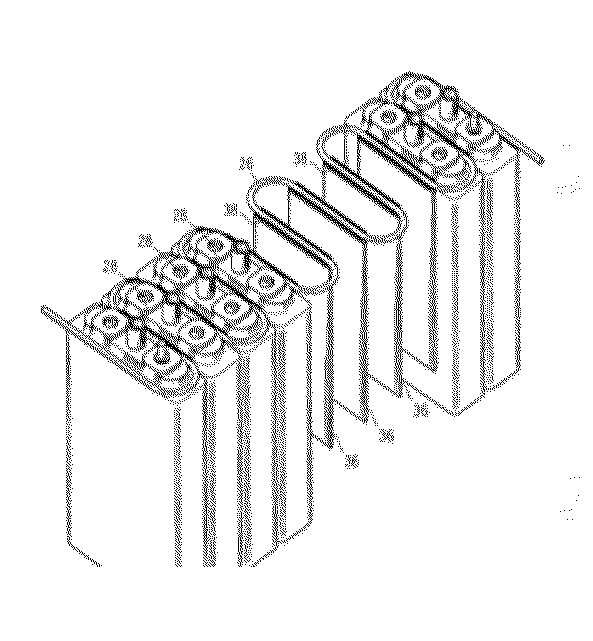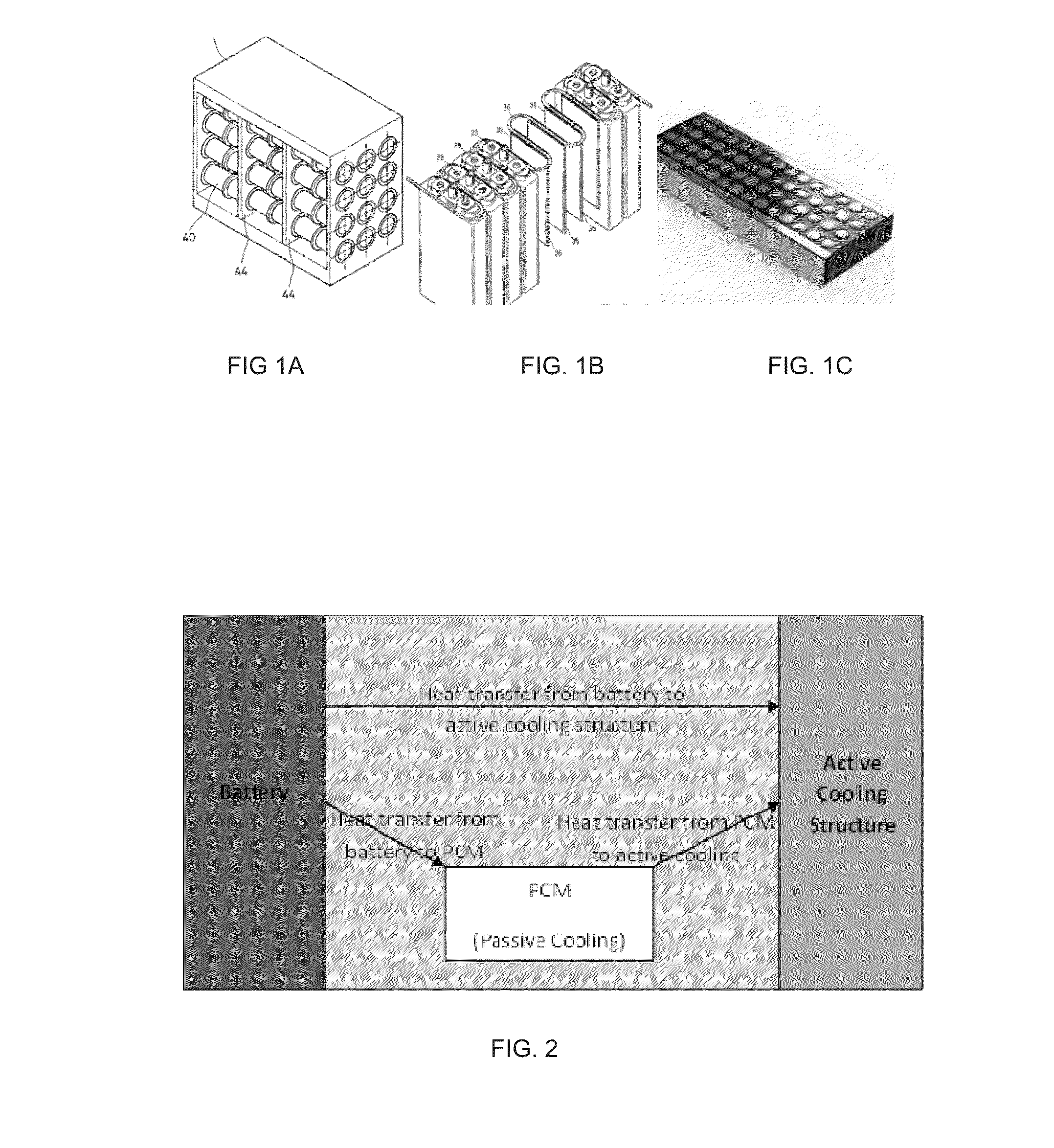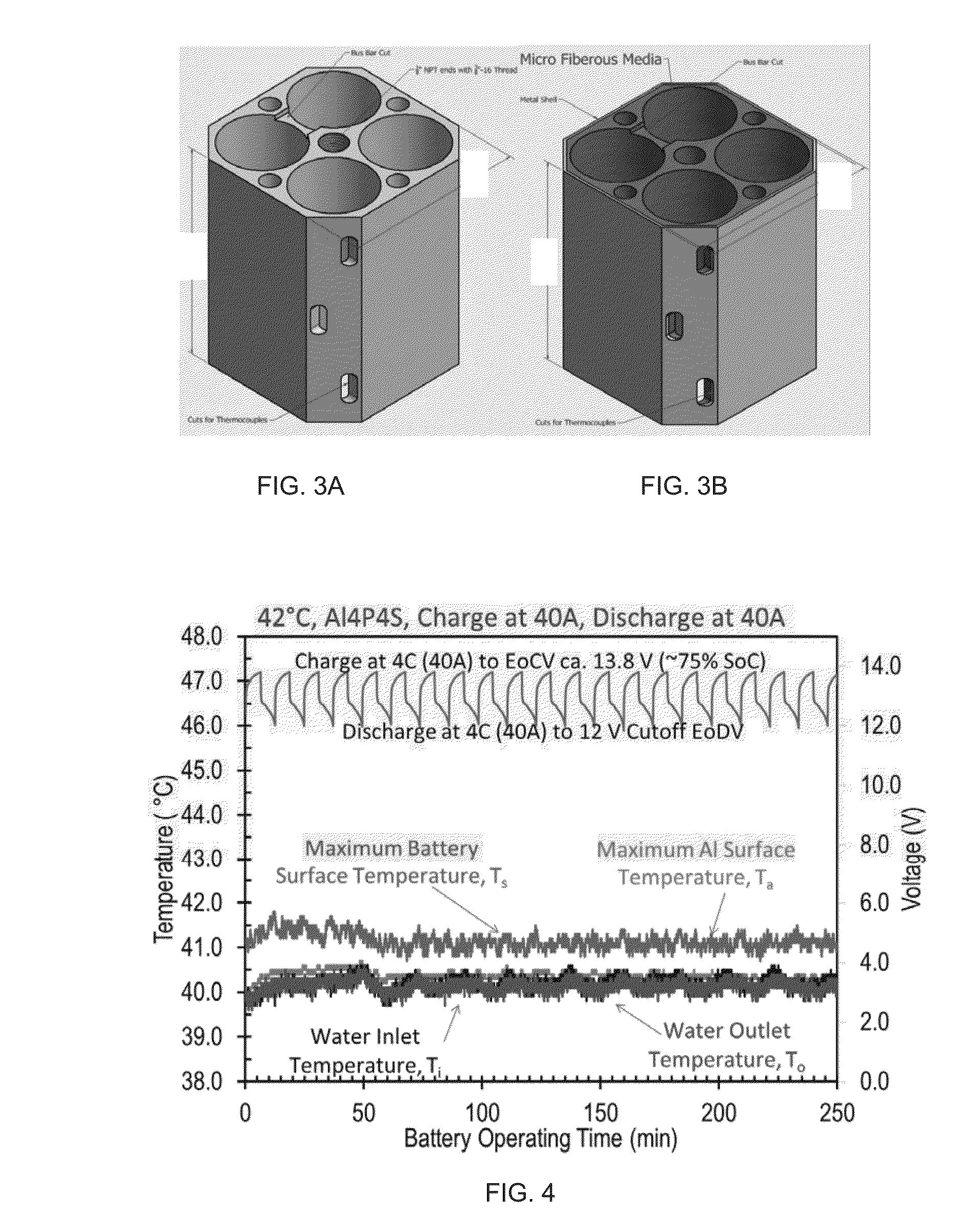Thermal Management Systems for Energy Storage Cells Having High Charge/Discharge Currents and Methods of Making and Using Thereof
a technology of energy storage cells and management systems, which is applied in the direction of cell components, lighting and heating apparatus, batteries, etc., can solve the problems of increasing the heat generation of cylindrical batteries, providing very large currents, and most rechargeable li-ion batteries are temperature sensitive, so as to improve heat transfer, improve heat transfer, and improve the effect of interfacial heat transfer
- Summary
- Abstract
- Description
- Claims
- Application Information
AI Technical Summary
Benefits of technology
Problems solved by technology
Method used
Image
Examples
example 1
Battery Array Containing Thermal Management System
[0075]Multiple battery packs were assembled to hold 16 batteries electrically connected in 4p4s (4 paralleled series with 4 batteries in a series) pattern. Cooling water channels were introduced inside the cooling structures as shown in FIG. 1. The arrays were distinguished based on the material used to form the cooling structures: Al-block (Aluminum cooling block) and MFM-PCM (copper microfibrous media with phase change materials). Al-block is neat active cooling design; MFM-PCM is a combination of active and passive cooling approaches (see FIGS. 3a and 3b).
[0076]Table 3 compares the Al-block and MFM-PCM with other typical battery cooling structures for 16 batteries (26650 power batteries) in a 4p4s array. Table 3 shows that MFM-PCM with 70 vol. % of PCM has a comparable heat capacity compared to PCM-only devices, which is about twice the heat capacity of non-PCM devices. As a result, the 26650 batteries can be discharged at high cu...
PUM
| Property | Measurement | Unit |
|---|---|---|
| diameter | aaaaa | aaaaa |
| diameter | aaaaa | aaaaa |
| vol. % | aaaaa | aaaaa |
Abstract
Description
Claims
Application Information
 Login to View More
Login to View More - R&D
- Intellectual Property
- Life Sciences
- Materials
- Tech Scout
- Unparalleled Data Quality
- Higher Quality Content
- 60% Fewer Hallucinations
Browse by: Latest US Patents, China's latest patents, Technical Efficacy Thesaurus, Application Domain, Technology Topic, Popular Technical Reports.
© 2025 PatSnap. All rights reserved.Legal|Privacy policy|Modern Slavery Act Transparency Statement|Sitemap|About US| Contact US: help@patsnap.com



